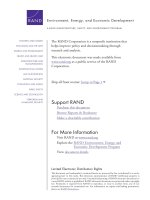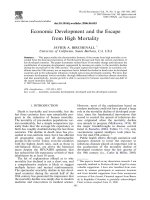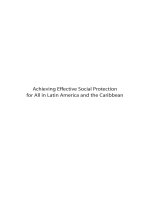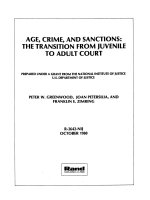Minicase 02 calculating the gains from portfolio diversification
Bạn đang xem bản rút gọn của tài liệu. Xem và tải ngay bản đầy đủ của tài liệu tại đây (28.98 KB, 2 trang )
Minicase 2
Calculating the Gains from Portfolio Diversification
CONCEPTS IN THIS CASE
expected return
risk
portfolio choice
diversification
systematic risk
nonsystematic risk
beta
capital asset pricing model
arbitrage pricing
Your supervisor has asked that you quantify the effects of diversification using three
potential portfolios. The information given regarding each portfolio is as follows:
Probability
.20
.30
.30
.20
Return (%) on
Security A
8
10
12
14
Return (%) on
Security B
24
16
12
17
Return (%) on
Security C
16
10
12
6
1. Using the information above, calculate the following for each individual security:
a. What is the expected return for security A?
b. What is the expected return for security B?
c. What is the expected return for security C?
d. What is the variance of the return for security A?
e. What is the variance of the return for security B?
f. What is the variance of the return for security C?
2. Using the information above, calculate the following for each pair of securities:
g. What is the covariance of securities A and B?
h. What is the covariance of securities A and C?
i. What is the covariance of securities B and C?
3. If your firm makes equal investments in securities A and B (50% in each):
j. What is the expected return of the portfolio that combines A and B?
k. What is the variance of the portfolio that combines A and B?
4. If your firm makes equal investments in securities A and C (50% in each):
l. What is the expected return of the portfolio that combines A and C?
m. What is the variance of the portfolio that combines A and C?
5. If your firm makes equal investment in securities B and C (50% in each):
n. What is the expected return of the portfolio that combines B and C?
o. What is the expected variance of the portfolio that combines B and C?
6. Given the results of your work in questions 3, 4, and 5 above, which portfolio
would you recommend to your supervisor? Explain.
7. You have searched online resources and found the beta of each security.
Security A has a beta of 1.0, security B has a beta of .50 and security C has a
beta of 1.50. If the risk-free interest rate is 5% and the expected return for the
market portfolio is 12%:
p. What is the CAPM risk premium for security A?
q. What is the CAPM risk premium for security B?
r. What is the CAPM risk premium for security C?
8. How would your definition of the risk premium change if you used the Arbitrage
Pricing Theory (APT) equation?
Copyright © 2000–2001 Addison Wesley Longman, a division of Pearson Education
Adaptation copyright © 2002 Pearson Education Canada









